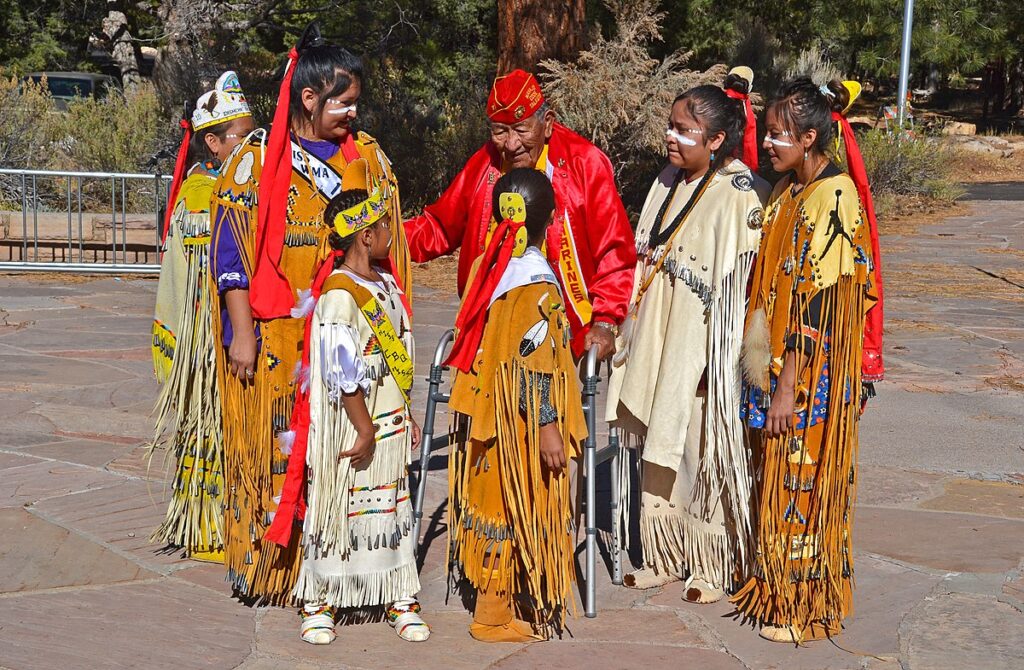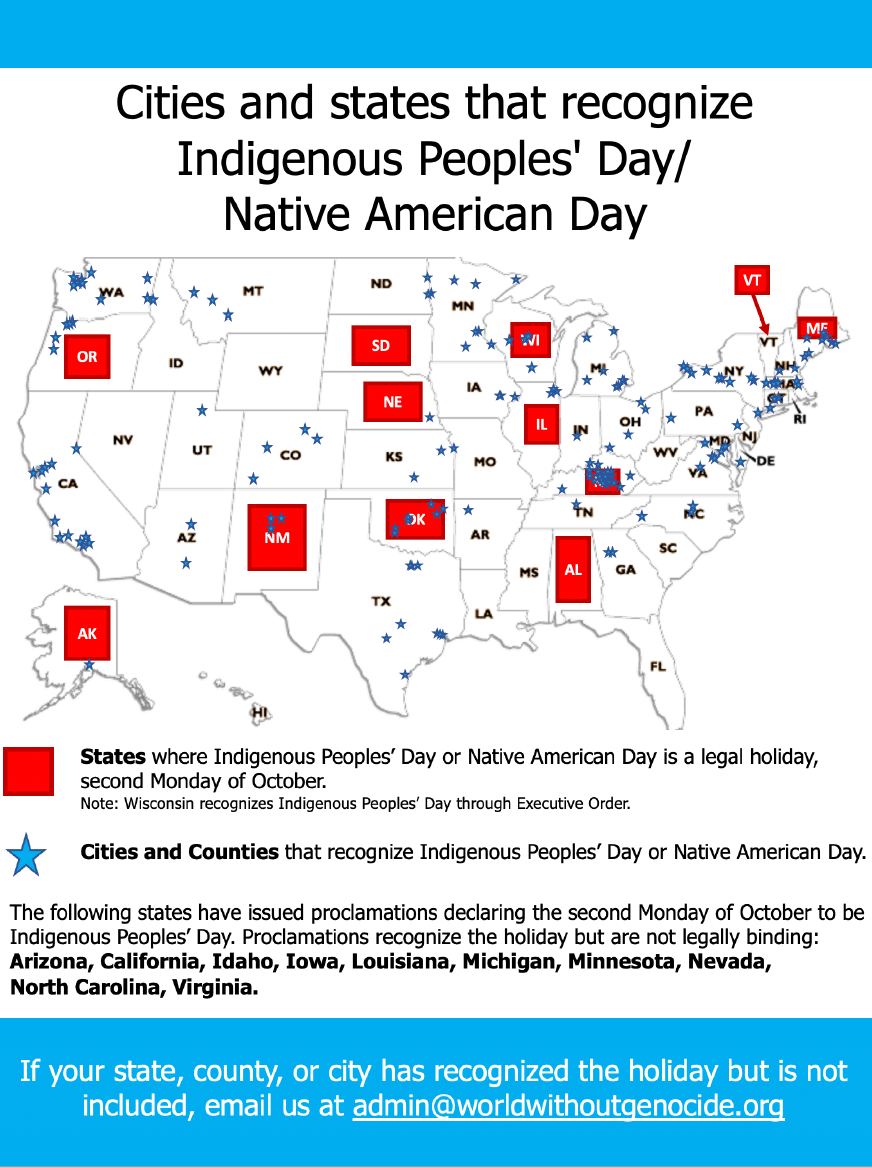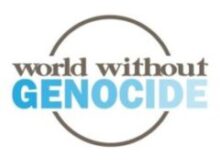Designate Indigenous Peoples’ Day

Image courtesy of Michael Quinn (National Park Service) is unmodified and CC BY 2.0.
In 1992, city council members of Berkeley, California unanimously declared a “Day of Solidarity with Indigenous People” on the second Monday of October, renaming the holiday formerly known as Columbus Day to promote Native American culture.
Since then, 19 states and many local governments have joined Berkeley in recognizing Indigenous Peoples’ Day. Celebrating and appreciating Indigenous history and culture acknowledges that Native Americans still face disproportionate discrimination and violence, especially women and girls.
World Without Genocide encourages city and state designation of the second Monday in October as Indigenous Peoples’ Day.
Actions
1. Email your state lawmakers today
Ask your state lawmakers to designate the second Monday in October as Indigenous Peoples’ Day.
- Look up if your state observes Indigenous Peoples’ Day.
- Find your state senator and representative online here.
- Use or modify our email template to contact your state lawmakers.
2. Email your city lawmakers
Ask your city lawmakers to designate the second Monday in October as Indigenous Peoples’ Day.
- Look up online if your city observes Indigenous Peoples’ Day.
- Find your Council Members’ contact information on your city’s website.
- Use or modify our email template to send to your city council members.
Learn more
- Minnesota Indigenous Peoples’ Day Bill (Word Document), World Without Genocide — History of Indigenous Peoples’ Day and a copy of the Minnesota bill establishing the holiday.
- A Resolution of the Mayor and City Council Recognizing the Second Monday of October as Indigenous Peoples Day (PDF), the City of Minneapolis — A copy of the City of Minneapolis’ resolution.
History of Indigenous Peoples’ Day
 The idea of replacing Columbus Day with a day celebrating the Indigenous people of North America first arose in 1977 at the United Nations International Conference on Discrimination Against Indigenous Populations in the Americas.
The idea of replacing Columbus Day with a day celebrating the Indigenous people of North America first arose in 1977 at the United Nations International Conference on Discrimination Against Indigenous Populations in the Americas.
In 1992, the City Council of Berkeley, California, declared October 12 a “Day of Solidarity with Indigenous People” and designated 1992 as the “Year of Indigenous People,” with programs held in schools, libraries, and museums. The renaming of Columbus Day was to call attention to the destruction of Native American people and culture through disease, warfare, massacre, displacement, and forced assimilation. Berkeley has continued to Indigenous Peoples’ Day since 1992 and holds a powwow and festival on the day.
In the years after Berkeley’s move, other local governments and institutions have either renamed or canceled the celebration of Columbus Day, either to celebrate Native Americans, to avoid celebrating actions of Columbus that led to the colonization of America, or due to controversy over the legacy of Columbus.
At least four states do not celebrate Columbus Day (Alaska, Hawaii, Oregon, and South Dakota) with South Dakota officially celebrating Native Americans’ Day instead. Various tribal governments in Oklahoma designate the day “Native American Day,” or name the day after their own tribe.
Some Native Americans formally celebrate Indigenous Peoples’ Day instead of Columbus Day through special ceremonies.
Recognizing and appreciating Indigenous history and culture acknowledges that Native Americans still face disproportionate discrimination violence, especially women and girls.
Missing and Murdered Indigenous Women
Indigenous women face higher rates of murder and rape throughout the country than any other demographic group. According to the U.S. Department of Justice, Indigenous women are murdered at a rate that is ten times higher than the national average. The violence against women and girls remains under-reported and under-prosecuted. More than half of all Indigenous women have experienced sexual violence, domestic physical abuse, and stalking.
These issues are exacerbated by the prevalence of male-dominated enterprises near reservations, such as oil and gas industries, logging, shipping, and mining. These industries bring transient male workers to rural areas and have contributed to upticks of violence against Indigenous women. The complicated legal system and federal, state, and tribal jurisdictions surrounding reservations, a lack of funding for Indigenous law enforcement, and a lack of inter-agency coordinated tracking ability for criminal activities give impunity to perpetrators of sexual violence. While steps are being taken to investigate these issues at both federal and state levels, attention is currently under-funded and inadequate.
In 2019, the Minnesota Legislature created the Missing and Murdered Indigenous Women’s Task Force with unanimous bipartisan support. In December 2020, the Task Force published a report identifying the root causes of violence with an attached mandate for change.
Click here to download the Task Force’s report. We encourage you to read it and learn more about the violence facing indigenous women.
Updated September 2023.


